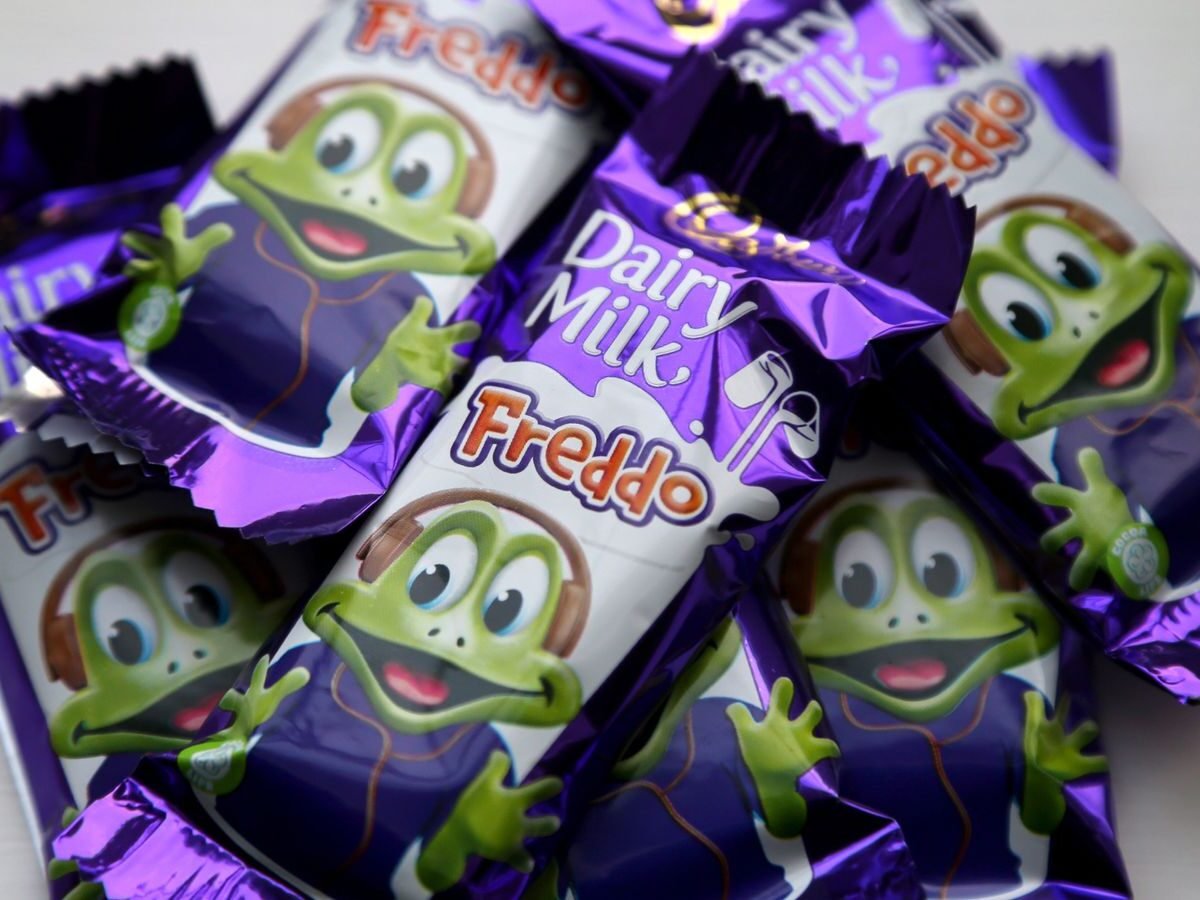Why the Freddo creator’s daughter won’t buy iconic chocolate bar – and what it says about the economy
Changing in cost but seemingly not in popularity, the Freddo chocolate bar has become a health check for the UK economy.
When he created the sweet treat almost a century ago in Australia, British teenager Harry Melbourne couldn’t have foreseen he was also crafting a barometer for the cost of living.
But that’s the function of the once-10p chocolate frog in some corners of the internet, where memes track how its price has risen – up to as high as £1 this year – and how fans feel about it.
Harry’s own daughter shares their fury. In childhood, she would wait for her father to come home with boxes of Freddos, but she now has vowed never to buy one again.
“Dad was disgusted with how small it is now and how much they charge for it,” Leonie Wadin, 74, told Money from her home in Melbourne.
“He’d roll over in his grave if he could see it now; he’d be disgusted. It was a penny chocolate.
“Since Dad died, I haven’t bought a Freddo.”
The origin story
As much as the modern Freddo would upset her father, Leonie said he “never knew” its appeal had reached his native UK and would have been “so proud”.
Harry was only 14, she said, when he cooked up the bar at the confectionery company MacPherson Robertson in 1930, having changed the mind of a boss who wanted a chocolate mouse.
“He said children are scared of mice, so why not a frog? Because kids go down to the lake and catch tadpoles,” Leonie said.
By the time Harry was 15, Freddo – named after his “best mate” Fred – was on the shelves in Australia, selling for a penny.
It doesn’t sell for a penny any more, but does the maths support people being so annoyed?
The numbers
There are different ways of looking at it: the price of a Freddo, how many you can buy relative to how much you’re earning and the rate of inflation.
Let’s start with the first two.
In 1999, the Freddo cost 10p at a time when the newly introduced national minimum wage was £3.60 for workers aged 22 and over.
That meant your hourly pay could get you 36 bars (ignoring tax and national insurance).
Today, a Freddo typically costs at least 30p (though some retailers sell it for 35p), and the minimum wage is £12.21 (as of April this year), giving you 40 bars.
This argument undermines the memes – as does any argument about shrinkflation, because Freddo’s size has stayed fairly consistent in the UK, weighing in at 18g. The British consumer doesn’t appear to be getting short-changed (though in Australia, it’s a lighter bar at 12g, which may explain Leonie’s particular ire).
Inflation and how much a Freddo should cost now
To further understand Leonie’s grievance (as well as everyone else’s), you might look at inflation, which measures how fast the cost of goods and services is rising.
At its UK relaunch in 1994, a Freddo cost 10p, and it stayed that way until 2007.
If its price had increased in line with inflation, today a bar would go for about 21p, not 30p or 35p, according to the Bank of England’s inflation calculator.
But measures of inflation, specifically the consumer price index (CPI), look at the average price rise of goods and services bought by households, not changes for each individual product.
Danni Hewson, head of financial analysis at AJ Bell, says two key Freddo ingredients explain its specific price rise since the turn of the century.
“Both cocoa and sugar prices have shot up, with the former up more than 750% between then and now, and raw sugar prices up almost 250%,” she said.
“So finding that the price of a Freddo has jumped 200% in the intervening period shouldn’t surprise anyone.”
Wages have increased, she added, “but of course it would cost you more to get to the shop in the first place, as fuel and travel prices have also risen”.
All of which suggests that the internet’s anger may not be justified. But there’s another way of looking at it…
Emotion, rather than maths
Memes aren’t reflective of maths so much as sentiment – the way people feel.
Spending £1 now gets you three Freddo bars, at best. In 1999, that got you 10 – and this is evocative.
As Hewson, from AJ Bell, put it: “That childish glee of popping into a shop with £1 and coming out with 10 wrapped bars was tangible.
“Knowing that today we’d only emerge with three or fewer chocolate treats feels unfair.”
This may explain why the bar is perceived as too expensive now.
Freddo gets political
The Bank of England’s governor is mandated to keep inflation at around 2% each year.
If the Bank misses this target by 1% – meaning if inflation falls below 1% or above 3% – the governor has to send a letter to the chancellor explaining why.
While that doesn’t mean the governor is about to make any apology for the price of a Freddo, one MP recently tried to force the issue directly.
Labour’s Patrick Hurley, who represents Southport, said last October he would launch a petition to bring the price down to 5p and send it straight to Cadbury.
He got the idea after he was questioned by children at a secondary school, though he told the BBC it was a “whimsical, light-hearted thing we can do” to engage the youth in politics.
“If you start talking about gas bills,” he said, “the average 14-year-old might switch off, but if you talk about the price of chocolate bars…”
Money reached out to Hurley, but he didn’t get back to us. The petition doesn’t appear on his website now.
‘Freddo is never gonna die’
For Leonie, the sentiment goes deeper than the price – she feels Cadbury has made all that money from her father’s idea.
But the sweets giant did keep in touch with Harry, even up to his 90th birthday, four years before he died, when it sent a Freddo cake and a small Freddo statue.
Leonie has five children, 10 grandchildren and two great-grandchildren. They all know Harry’s story.
And for all her gripes over the chocolate’s soaring cost, she doesn’t want them to miss out on the excitement she felt when her dad brought boxes home from work.
“They’re very proud of their great-granddad, they still buy them, they love them,” Leonie said of the youngest in her family.
And that’s the legacy she wants her family to cherish after her.
“Carry on through every heritage, that’s what I want,” she said.
“The Freddo has to be passed on, Freddo is never going to die.
“It will always be there… I just want it all passed down, so that the frog is always in our lives.”
And if you’re wondering what Cadbury has to say…
We got in touch with Mondelez International, which owns Cadbury, and this is what the multinational firm said:
“Freddo has endured popularity across generations since originally launching in the UK back in 1973, and continues to be a key part of Cadbury’s range today.
“Whilst it’s important to stress that as a manufacturer we do not set the retail prices for products sold in shops, our manufacturing and supply chain costs have increased significantly over the past 50 years, and Freddo has become more expensive to make.
“We have absorbed these increased costs wherever possible, however on occasion we have made changes to our list prices or multipack sizes to ensure that we can continue to provide consumers with the Freddo that they love, without compromising on the great taste and quality they expect.”





